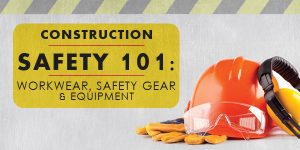Unfortunately, the daily grind for many of us means sitting in an office chair… maybe getting up for lunch… then sitting in an office chair again. For a really long time. There are many downsides to this, such as the rapidly rising numbers in the obesity crisis due to office workers eating too many calories and not exercising proportionately – or, often times, at all – but there is one unspoken menace that people often don’t consider when they think about this problem. That menace is back pain. Back pain can hinder you in your work life, home life and even while you’re trying to sleep. It can haunt your mornings as you try and get out of bed, and every time you need to straighten your spine. It’s horrible, and an awfully common problem. But there are some things you can do to reduce it; these exercises have been proven to reduce back pain, making life much more bearable day-to-day for sufferers.
Knee-To-Chest Stretch
“Getting into a stretching routine every morning can be difficult, but starting it off with an easy stretch can make all the difference, and keep you motivated to stay in your routine every morning,” Iris Moose, a health writer at Last minute writing and Writinity, says, “and there’s no better example than the knee-to-chest stretch. Simply lie on your back and pull each knee up to your chest, then both. Repeat it two to three times, and you’ve got yourself a warm-up stretch that won’t leave you dreading every morning’s routine – you’ll be pumped up and ready to keep those muscles warm and loose with this stretch!”
Modified Pull Ups
Pull ups are among the more infamous exercises, but you might not have heard of their more easy-going cousin, the modified pull up. While pull ups can be amazing for your back muscles, not everyone has the pre-existing strength and muscle definition to complete them successfully, and certainly not several in a row. So, if you don’t want to break your routine’s flow but still want to include pull ups, modified pull ups are the way to go. You need a sturdy bar, like with a regular pull up, but you’ll want to make a diagonal line with your body going under the bar, before tensing your back and tightening your shoulder blades, and pulling your body up until your chest is only a little way from the bar, think one or two inches. Then, carefully move back to the ground, still in your diagonal line, and repeat – it’s that simple!
Resistance Band
“Resistance bands are great pieces of kit in the gym, and they can do wonders for the start of a workout, when you’re still trying to hit your groove,” states James Beck, a lifestyle blogger at Draft beyond and Research papers UK, “but make sure that you choose the right resistance band for you. Practice with a couple to make sure that you’re challenging yourself without exhausting yourself, and then get started with your workout! Stretch it out horizontally, equally with both arms, pulling it back and forth so that your shoulder muscles have to compress and extend when necessary. It’s great for starting off your workouts and keeping your back in check.”
Quadruped Dumbbell Row
This is a good one for rectifying your posture issues, and any to do with form. Before you attempt any sort of rowing exercises, you should definitely do this first, because it’ll warm up the right muscles and stop you injuring yourself unnecessarily. With a dumbbell in both hands, go on all-fours and pull one dumbbell at a time up towards your stomach. Alternate between the arms that you use, and make sure that you keep all parts of your body straight and in-line – you should be able to do twelve reps on each side for around three cycles, or work yourself up to that level.
Lat Pull-Down
This exercise can be done on one of the widely popular exercise machines with a pull-down option, or with a resistance band of your choice – but, like with the above resistance band exercise, take heed to the type of resistance band you are using and make sure that it’s right for you. Once you’ve got your equipment sorted, pull down the weights towards your chest, but don’t let yourself fall backwards and give in to the demands of your torso – stay strong, and keep that torso straight! Engaging your back, from the upper to the middle, throughout this exercise will make sure that you get the most out of it, and, most importantly, work those back muscles.
Conclusion
On their own, none of these exercises are overnight ‘miracle cures’. They need to be added into existing routines or crafted alongside other exercises into new routines, and they need to be worked on. The exact same exercises don’t work for everyone, so you might need to change things up, and equipment availability will factor into some people’s experiences. That being said, they are all guaranteed to soothe back pain in the long run and improve your back muscles, making future pain and injuries unlikely, so there’s absolutely no harm in slotting them into your workout routine!
Angela J. Bryant writes and edits successfully at Lucky Assignments, as well as Gum Essays, and is a social media and job seeking specialist. She understands the woes of the common worker, and finds pleasure in life when she helps everyday people with their problems.



